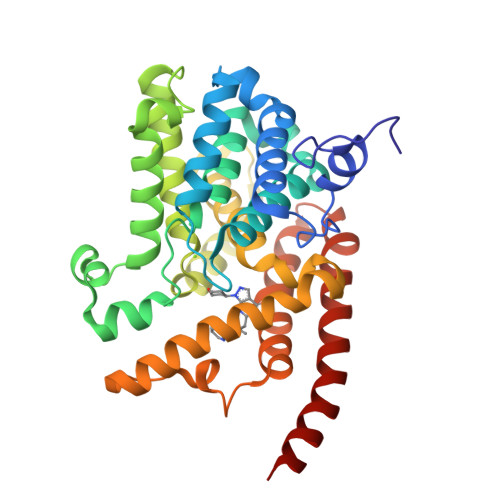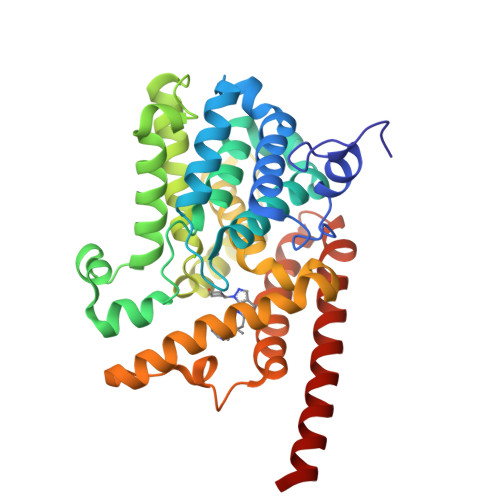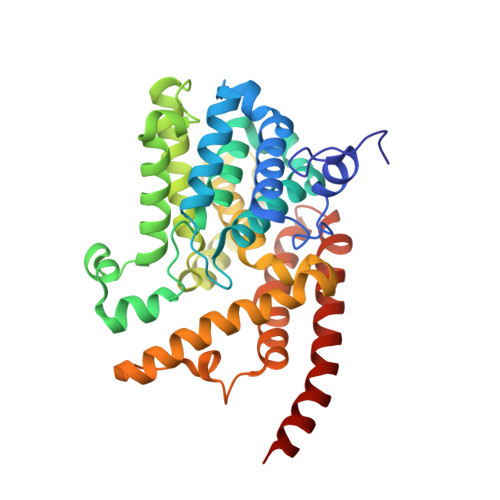Application of structure-based drug design and parallel chemistry to identify selective, brain penetrant, in vivo active phosphodiesterase 9A inhibitors.
Claffey, M.M., Helal, C.J., Verhoest, P.R., Kang, Z., Fors, K.S., Jung, S., Zhong, J., Bundesmann, M.W., Hou, X., Lui, S., Kleiman, R.J., Vanase-Frawley, M., Schmidt, A.W., Menniti, F., Schmidt, C.J., Hoffman, W.E., Hajos, M., McDowell, L., O'Connor, R.E., Macdougall-Murphy, M., Fonseca, K.R., Becker, S.L., Nelson, F.R., Liras, S.(2012) J Med Chem 55: 9055-9068
- PubMed: 23025719
- DOI: https://doi.org/10.1021/jm3009635
- Primary Citation of Related Structures:
4E90, 4G2J, 4G2L - PubMed Abstract:
Phosphodiesterase 9A inhibitors have shown activity in preclinical models of cognition with potential application as novel therapies for treating Alzheimer's disease. Our clinical candidate, PF-04447943 (2), demonstrated acceptable CNS permeability in rats with modest asymmetry between central and peripheral compartments (free brain/free plasma = 0.32; CSF/free plasma = 0.19) yet had physicochemical properties outside the range associated with traditional CNS drugs. To address the potential risk of restricted CNS penetration with 2 in human clinical trials, we sought to identify a preclinical candidate with no asymmetry in rat brain penetration and that could advance into development. Merging the medicinal chemistry strategies of structure-based design with parallel chemistry, a novel series of PDE9A inhibitors was identified that showed improved selectivity over PDE1C. Optimization afforded preclinical candidate 19 that demonstrated free brain/free plasma ≥ 1 in rat and reduced microsomal clearance along with the ability to increase cyclic guanosine monophosphosphate levels in rat CSF.
Organizational Affiliation:
Pfizer Worldwide Research and Development, Eastern Point Road, Groton, Connecticut 06340, United States. michelle.m.claffey@pfizer.com




















